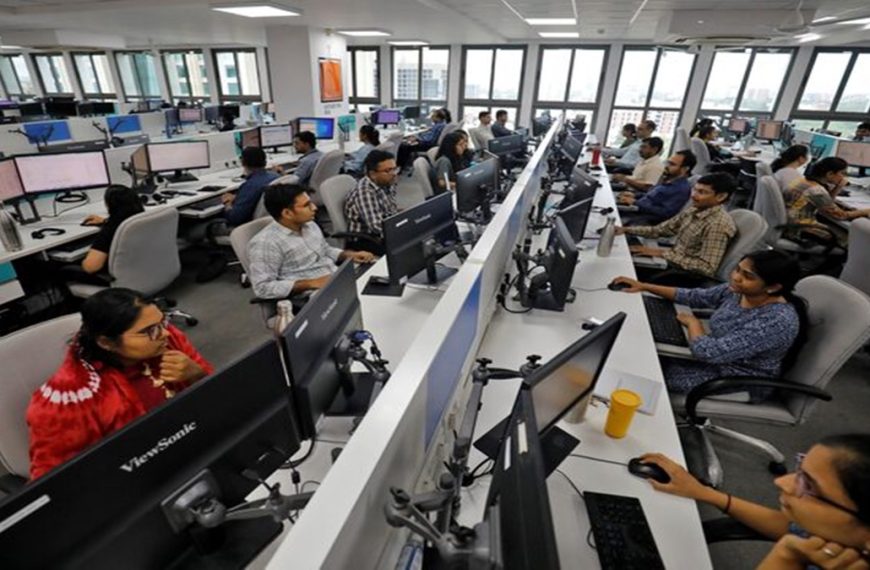Capital expenditure (capex) plays a pivotal role in boosting production and driving economic growth. Recent findings from the National Statistics Office (NSO) highlight a cautious stance among private sector enterprises regarding their investment plans. This inaugural survey sheds light on the investment intentions of the private sector, revealing insights into their capex strategies for the upcoming fiscal years.
Private Sector Capex Intentions for FY26
The NSO’s Forward-Looking Survey indicates that private corporate sector enterprises are anticipating a 25.5% reduction in their capex intentions for FY26 compared to previous years. While this intended capex is lower than FY25 projections and FY23 actual expenditures, it still surpasses the actual amounts reported in FY24 and FY22. For context, actual capex was ₹3.95 lakh crore in FY22, increased to ₹5.72 lakh crore in FY23, but then saw a decrease to ₹4.22 lakh crore in FY25. The survey suggests that this trend reflects a strategy of cautious planning following a robust FY25.
Survey Insights and Sample Size
Conducted between November 2024 and January 2025, the survey encompassed 5,380 enterprises, with 2,172 providing comprehensive data over five years. This analysis reveals a 23.9% growth in aggregate capex from FY22 to FY26. The survey’s core aim is to track trends in private sector capex across FY22, FY23, and FY24, alongside projections for FY25 and FY26.
Post-Pandemic Capex Trends
The data indicates a 66.3% increase in aggregate capex among surveyed enterprises from FY22 to FY25, peaking in FY25. However, the overall growth from FY22 to FY26 stands at only 24%. Intended capex for FY25 is projected at ₹6.56 lakh crore, marking a 55.5% year-over-year increase, while FY26 expectations drop to ₹4.89 lakh crore. Despite significant corporate tax reductions initiated in 2019 and the government’s push for increased public investment, private sector caution persists.
Sectoral Variances in Capital Expenditure
According to the survey, the average capex per enterprise for purchasing new assets in FY25 is estimated at ₹172.2 crore. The manufacturing sector leads with 43.8% of the total capex, followed by 15.6% in information and communication, and 14% in transportation and storage. Notably, 49.6% of private sector enterprises reported investing primarily for income generation, with 30.1% focusing on upgrades, and a mere 2.8% on diversification. In FY25, around 53.1% of capex was allocated for machinery and equipment.
Factors Influencing Investment Hesitancy
The survey highlights a cautious investment climate influenced by various factors, including global uncertainties, weakening urban consumption, and subdued export demand. Manufacturing sector capacity utilization has dropped to 75.4% in Q3 FY25, down from 76.8% in Q4 FY24, indicating a lack of improvement in demand. Typically, capex rises when companies are in growth mode but falters when they are hesitant, fearing reduced demand, high borrowing costs, inflation, and geopolitical tensions. The Budget 2025 aims to address these concerns by introducing tax reliefs worth ₹1 lakh crore for the urban middle class to stimulate consumption and promote private investment growth.
Broader Implications of Investment Trends
The current state of private investment reflects a broader trend, as data from the Centre for Monitoring Indian Economy shows a 9% decline in actual private-sector capex to ₹26.8 lakh crore in FY25, marking the lowest level in three years. This decline indicates a second consecutive year of year-on-year decreases in private capex, suggesting that the post-COVID recovery may have been fleeting. Additionally, the finance ministry’s report underscores the risks posed by global uncertainties, which could hinder growth prospects for FY26. It emphasizes the need for both the private sector and policymakers to act decisively to prevent a cycle of uncertainty from stalling investment initiatives.
In summary, as the private sector navigates these challenging times, understanding their investment strategies and addressing the underlying concerns will be crucial for fostering a more robust economic environment going forward.











